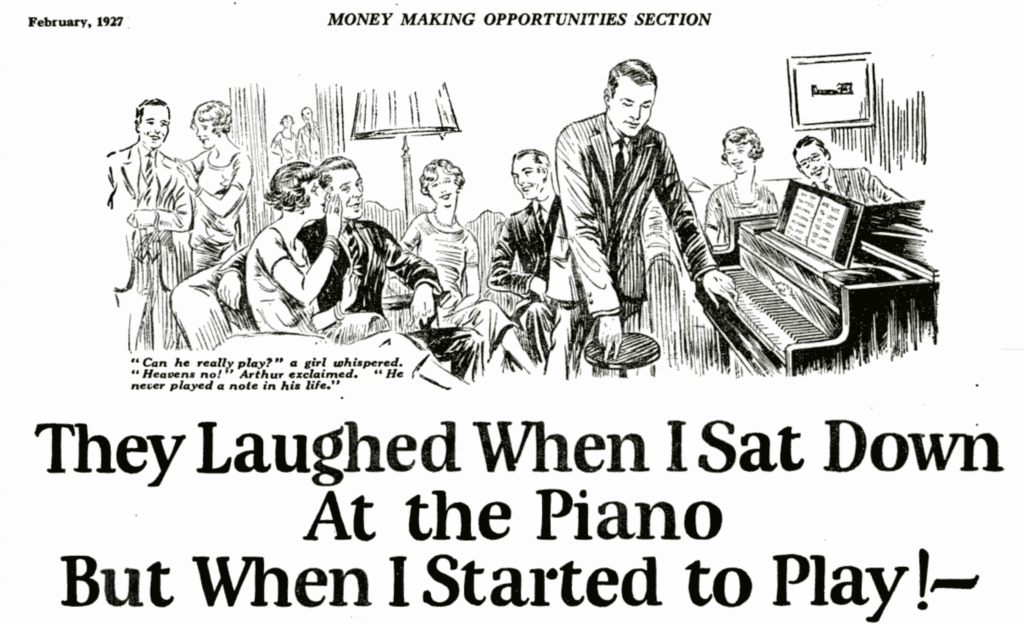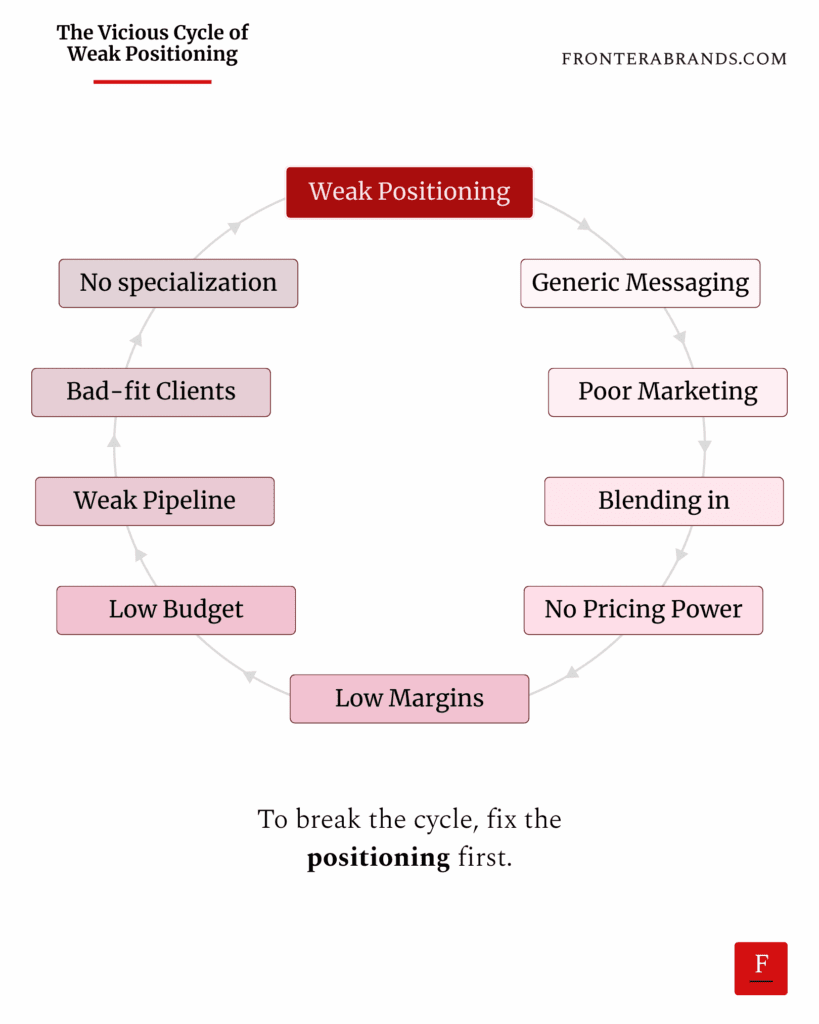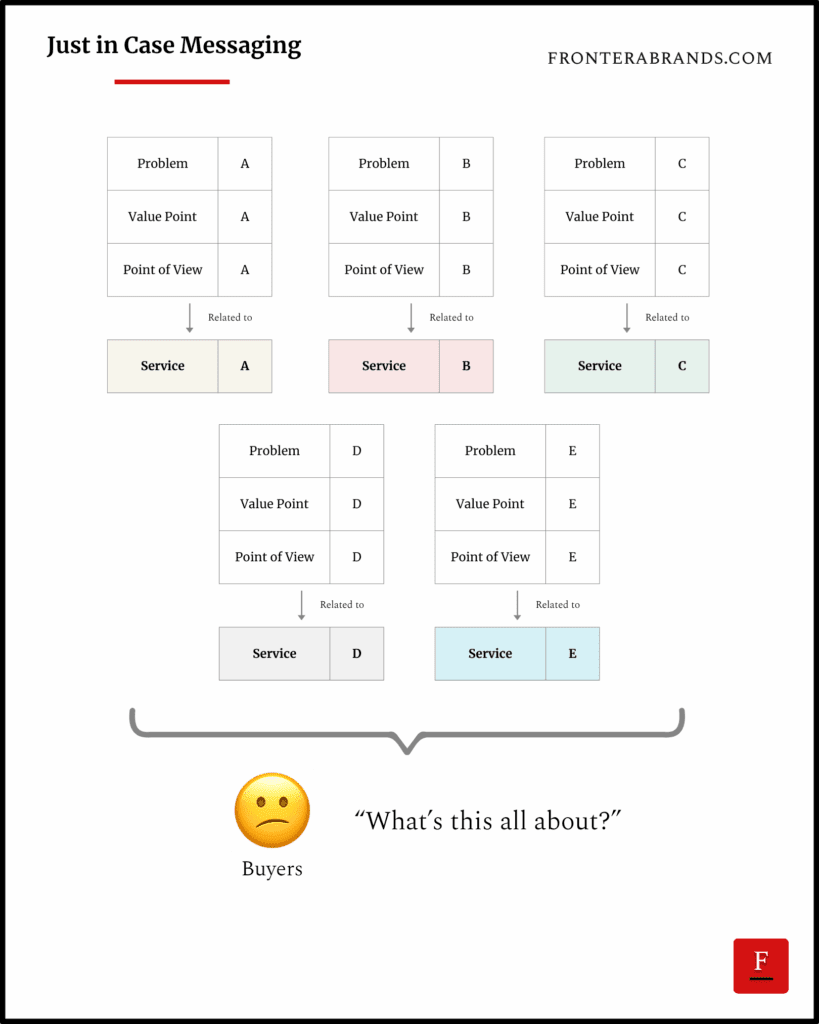♦️ Why Nike can get away with ‘Just Do It’ and your B2B brand can’t
|
The biggest mistake in B2B messaging is copying consumer brands. I know. Who doesn’t want to be inspirational like Nike? Who doesn’t want to influence buyers with a strong mission like Patagonia’s? But think about it. These are consumer brands. They sell commoditized products. A jacket is a jacket. No matter what brand you buy from, the product functionally does the same thing. So to differentiate themselves, consumer brands have to give intangible meaning to their tangible products. They have to represent an identity. And B2B executives buy from these brands as consumers. They buy Patagonia vests to protect the environment. They buy Rolex watches to feel they’ve made it in life. So they buy the identity before the product. That’s why when it comes to branding their own businesses, they want to do the same. They want to inspire their buyers. So when you go to their website or read their content, everything feels like a consumer brand. They have taglines that don’t mean anything — inspired by Nike’s “Just do it” or Apple’s “Think different.” They have mission statements with big words. But this never works to influence buyers. Why? Because for most B2B brands, the nature of the business is different. They already have intangible products and services. So making everything even more abstract with mission statements or vague taglines falls flat. Their buyers have a problem in their business. And they are looking for the best way to fix it. Imagine you are entering a new market and need expertise to navigate regulations. You don’t care if somebody is transforming an industry. All you care about is if they can help you. So buyers don’t get inspired when they read aspirational statements. They get annoyed. And they become less likely to take the next action. That’s why B2B brands have to do the opposite with their messaging. They should try to make everything as concrete as possible. They should relate everything to the real problems of their buyers to influence them.
B2B brands can take away many lessons from consumer brands. You know I like using stories from consumer brands myself. And we’ve also talked about cross-industry innovation. But leading with inspirational messaging is not one of them. B2B messaging has to lead with clarity. Especially if it’s a growing business. Because they can’t spend billions over decades to make inspirational slogans like “Just do it” mean something to their buyers. Their best bet is to get understood by buyers as quickly as possible. Let’s make it concrete with an example. Imagine a consultancy firm that helps logistics companies cut delivery delays. Look at these two different approaches to explain what they do:
Which one would be more likely to influence buyers to take the next step? Now imagine this clarity on every marketing channel. Your home page. Your ads. Your content. Buyers would know exactly what your brand does, how you do it differently, and why they should buy. You’d handle their objections step by step and make each step of your funnel convert better. So if you sell to businesses and your messaging imitates consumer brands, think again. Nike can get away with “Just do it.” Your brand can’t. Because your buyers don’t need inspiration. They need clarity. Most buyers don’t get your real value because of your messaging. That's killing your growthYou’re great at what you do. Your clients love you. But new prospects? They don't get it. They don't see why they should buy from you on your website, ads, or content. So they go with the big, familiar firms as the "safe" choice. Because your value is only as good as your messaging. If your website, ads, or content don't clearly show the real value of buying your solution, prospects won’t see it. You become just another provider. And that costs you sales without you knowing, every single day. We help B2B brands nail down their positioning and bring it to market with a message that makes buyers think: “This is exactly what we need.” So your marketing channels don’t just perform better — they sell. Want to stop losing sales to weak messaging? Fill out this form to book a 20-minute clarity call. You can reply to this email with your thoughts and feedback. I'd be happy to hear from you — I read and reply to all messages. And you can connect with me here on LinkedIn. Ozan |
Frontera
Join 10,000+ B2B founders getting the strategies of iconic brands.
In 1925, a rookie copywriter named John Caples had to sell something hard to sell: A mail-order piano course. He was barely a year into his job at the agency Ruthrauff & Ryan. The U.S. School of Music had knocked on their door. They wanted a campaign for their new self-study instrument courses. Caples needed an angle for his copy. Should he focus on how easy it makes learning? Should he focus on the lower price compared to hiring a tutor? Both were true. But none of it felt compelling. Caples...
Weak positioning causes a vicious cycle for every firm. It goes like this: You lack clarity around your ideal client profile, the specific problem you solve for them, and how you solve it differently. That causes you to have generic messaging. That causes your website, content, and ads to get ignored. That causes buyers to see you as interchangeable with hundreds of other firms. That causes you to lack pricing power. That causes you to have low margins. That causes you to have a low budget...
Boutique consulting firms make most of their revenue from a single service. But that core service gets only a tiny share of their messaging. You know why? Because they fear losing out. “What if somebody is looking for our other offers?” “What if we miss an opportunity?” So they list 10 services on their websites. Their content talks about 10 different value points related to different services. They hedge. But this ‘just in case’ messaging kills sales. Warren Buffett has a quote I like:...




